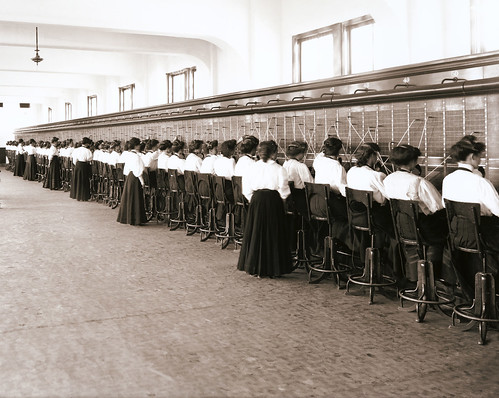The folks over at Parature recently produced an infographic about the evolution of customer service channels over the course of the last few decades. They then combined that infographic with a series of other data points from various sources to produce an interesting piece. I’ve included the infographic below for your perusal and delectation.
For regular readers of my blog you’ll probably have picked up that, whilst I’m interested in new technology, I’m also a fan of not discarding older things that work just because a new, shiny object comes along. Reminds me of the old saying:
Here’s some quick thoughts on Parature’s graphic.
- The phone is still really, really important. – Let us not forget the good, old phone as we pursue increased performance in other channels, which may not be as important in the minds of our customers.
- Email is still very big and important and is not going away despite the advent of social channels.
- Content is becoming increasingly important as part of our customer’s ‘shopping’ experience. This is backed up a piece of research (I forget the source) that I heard about from Graham Jones when he was interviewed by Ian Brodie in The Future of Buying Professional Services. In the interview, Graham says that customer shopping and buying behaviour has dramatically changed over the last ten years. Whilst the trend is applicable across industries, he cites the case of the automobile industry where it states that 10 or so years ago a customer wanting to buy a new car would visit, on average, 8 dealerships. Whereas now they will only visit, on average, 1.2 dealerships in their search for a new car. The implication is that customers are now doing most of their ‘shopping’ online and when they arrive at a car dealership, say, they are ready to buy. Therefore, to be successful and competitive in this changing world, firms need to think about how they are helping their customers or clients, existing or prospective, with their ‘shopping’ journey and the implications for the words etc they put on their websites that can help their customers.
- Is web chat the next killer app? Dr Nicola Millard in my recent interview with her thinks it might be (it’s her job to know these things) and, so, she would support this research.
What’s the implication of all of this?
Yes, we are moving towards a more omni-channel world but I’d caution against letting technology lead your business. Rather, I’d suggest that you remain interested in, and pay attention to, what the customer does, not what the customer could or will do.
It may not be a sexy or new approach but if your customer wants to phone you and email you, find a way of letting them do this with the minimum of effort (for them, that is).

Photo Credit: IronRodArt – Royce Bair (“Star Shooter”) via Compfight cc




